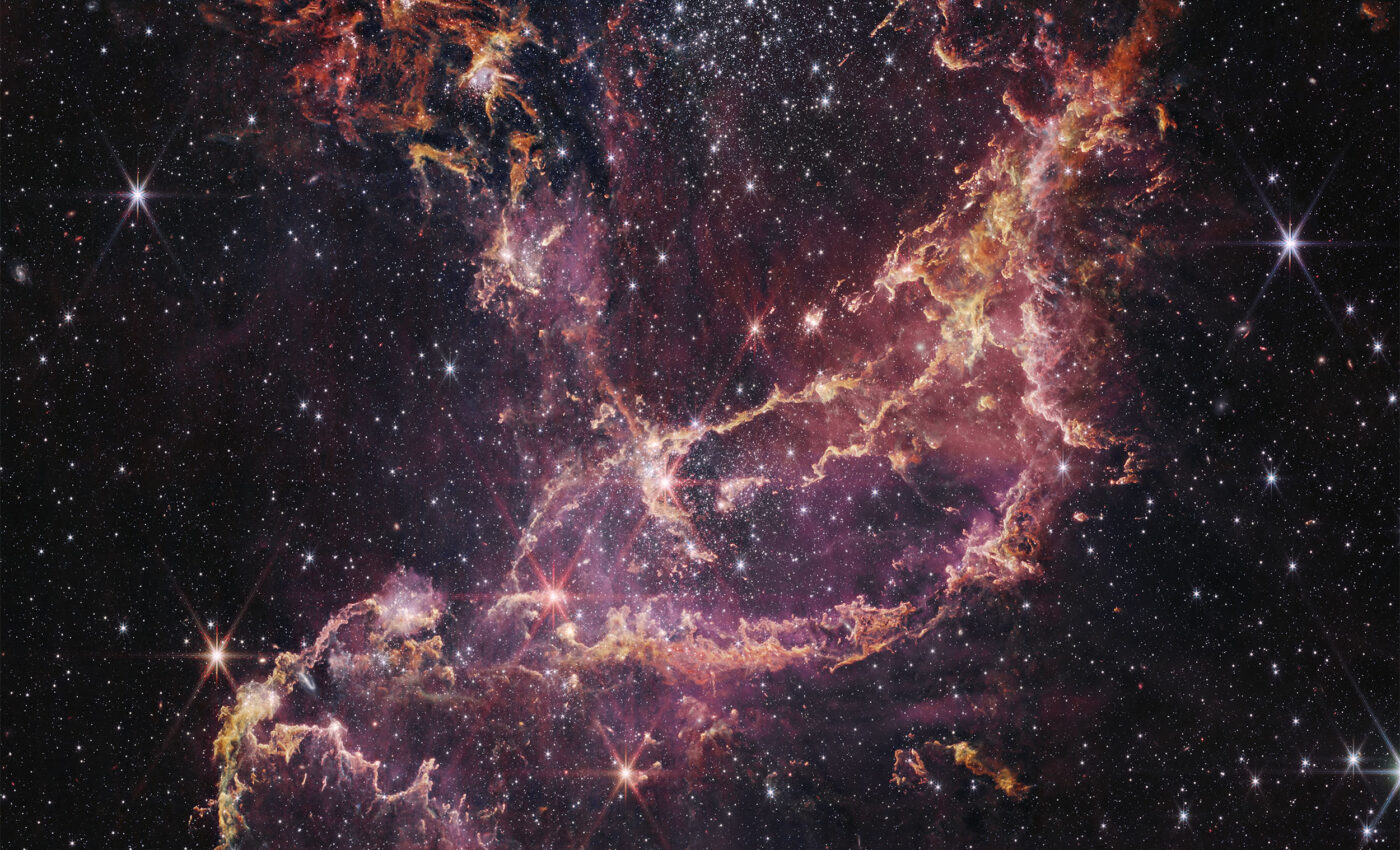
Young stellar objects: Observing the early lives of stars
In a recent study utilizing the capabilities of the James Webb Space Telescope (JWST), an international team of astronomers focused on young stellar objects within the NGC 346 cluster.
Situated in the Small Magellanic Cloud, this vibrant open cluster is recognized as the most luminous star-forming region in the nearby dwarf galaxy, located approximately 202,000 light-years from Earth.
Young stellar objects: The early stages of stars
Young stellar objects (YSOs) represent early stages in the life cycle of stars, encompassing phases from protostars to pre-main sequence (PMS) stars.
These objects typically reside within dense molecular clouds rich in gas and interstellar material, making them ideal subjects for understanding stellar evolution.
The research was led by Nolan Habel from NASA’s Jet Propulsion Laboratory. The team used JWST’s advanced Near Infrared Camera (NIRCam) and Mid-Infrared Instrument (MIRI) to delve deeper into the secrets of NGC 346.
A treasure trove of stellar data in NGC 346
The research uncovered a wealth of data, revealing 203,891 unique sources within the cluster using NIRCam and MIRI. Of these, 196 were confidently identified as YSOs and PMS stars, earmarked for more detailed spectroscopic analysis.
Additionally, 833 objects displayed significant mid-infrared excess, hinting at their identity as young stellar objects, which are often found near areas dense with diffuse dust and gas.
“In this paper, we present JWST imaging data of NGC 346 from 1.15–25.0 µm and provide an overview of the populations in the region, particularly the young populations, as determined from photometric analysis,” noted the researchers.
Detailed spectral analysis
Further investigations involved spectral energy distribution (SED) fitting on 77 sources, which pinpointed 23 objects as young stellar objects with high certainty.
These YSOs exhibited a broad range of sizes and masses, with radii stretching from 0.14 to 82.32 solar radii and masses between 0.95 to 4.15 solar masses. Their bolometric temperatures also varied widely, ranging from 2,051 to 17,930 Kelvin.
The study highlighted one particularly notable young stellar object, designated CN202153, recognized as the least massive extragalactic YSO confirmed thus far.
The team suggested that further near-infrared spectroscopic studies with JWST are essential to refine our understanding of these 23 specifically identified young stellar objects.
The research not only enriches our comprehension of star formation in distant clusters but also underscores the invaluable role of advanced telescopes like the JWST in unraveling the complexities of the universe.
Young stellar objects
Young stellar objects form in dense regions of molecular clouds, where gravity pulls gas and dust together, leading to the accumulation of material that eventually becomes hot and dense enough to initiate nuclear fusion.
The process begins with a protostar, which is the core that forms within a collapsing cloud of gas and dust, and is often obscured from view by the surrounding dense material.
Various stages
As a young stellar object continues to gather mass from its parent molecular cloud, it may go through various stages characterized by different amounts of accretion and outflow of material.
These stages include the deeply embedded Class 0 and Class I phases, which are mostly visible in infrared and radio wavelengths due to their thick dust envelopes. In later stages, such as Class II and Class III, the object becomes visible in optical wavelengths as it clears away its surrounding envelope.
Active accretion
Young stellar objects are often associated with phenomena such as Herbig-Haro objects, which are jets of gas ejected by the star that collide with the surrounding medium, creating visible shock waves. These are indicators of active accretion.
Protoplanetary disks
Another characteristic feature of YSOs is the presence of protoplanetary disks, rings of gas and dust that orbit the young star and can eventually form planets.
Studying young stellar objects
Observing YSOs can provide insights into the magnetic activity, stellar winds, and outflows that characterize the early lives of stars, which are much more active compared to their later stages.
Studying young stellar objects is crucial for understanding the processes that lead to star and planet formation and provides insights into the conditions of the early solar system.
The study is published as a preprint in the journal arXiv.
—–
Like what you read? Subscribe to our newsletter for engaging articles, exclusive content, and the latest updates.
Check us out on EarthSnap, a free app brought to you by Eric Ralls and Earth.com.
—–













